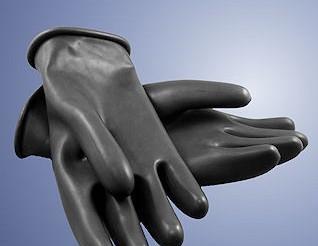dog
In the community, the dog will greet the parked private car in the most common way-lifting his leg to pee.
In fact, the substances contained in dog urine can neither react with rubber, nor its pH is not enough to cause corrosion to rubber, and the aging effect is almost negligible.
Rubber tires resist aging
There are many types of rubber, from natural rubber (mainly polyisoprene) to various synthetic rubbers (such as styrene-butadiene rubber, butadiene rubber, isoprene rubber, etc.), almost all of which can be used in the production of rubber tires.
Of course, rubber molecules are not diamonds, and the chemical bonds in them are not indestructible.
In order to delay the occurrence of aging, the rubber materials used in tires will add additives such as carbon black (so the tires are black) to absorb ultraviolet rays, and carbon black can also play a reinforcing role, so that the tires have sufficient hardness for use.
Rubber tires resist corrosion
In addition to anti-aging, tires also have excellent corrosion resistance - rubber itself is very corrosion-resistant. For example, in industrial production, pickling production lines often use rubber linings, and protective gloves for strong acid and alkali operations are also rubber.

Strong acid and alkali rubber protective gloves
Although no direct corrosion resistance test on tire rubber has been found, such research has been done on sealing rubber.
The main component of dog urine is water, in addition to a small amount of uric acid and urea, so that the pH value of dog urine is generally between 5.4-8.4 (pH value is used to indicate the hydrogen ion concentration in the aqueous solution).
In addition to being so low in pH, dog urine has a very short residence time on the tire surface, and the amount that can be effectively retained is even less - even with a slight increase in the volatilized concentration of water, but in the face of the dense and stable molecules of rubber, its
Blowout, in fact, there is another hidden story
Rumors say that the side of the tire is the weakest place, and dogs happen to urinate here.
Typical tire casing structure
It can be seen from the picture that the rubber layer on the side is indeed relatively thin, but this is not the Achilles' heel of the tire, and the puncture has nothing to do with side corrosion.
In fact, the puncture is more closely related to the tire inner tube (some integrated tires do not have a separate inner tube, but the inner tube and the outer tire are compounded together).
For the protection of the tire, the strength is provided by the belt layer and the ply (generally composed of high-strength polymer fiber fabric or even steel wire), and the role of the outer layer of rubber is mainly wear resistance.
As for the side of the tire, because it does not touch the ground, there is no risk of wear and tear, and it has nothing to do with the puncture.
Compared with excessive wear, punctures caused by under-inflated tires are more likely to be ignored by people, and they are more likely to find reasons in dog urine because they do not understand the reasons for such punctures.
Talk about wheels by the way
According to the logic of the rumors, the corrosion of the wheel hub is mainly because dog urine is a liquid containing ions, and the metal will form a corrosion battery in the ionic liquid. If the corrosion occurs and continues, it will affect the strength and cause structural damage and car crashes.
Unfortunately, the above description is actually sensational.
To sum up, car owners can rest assured that the urine of dogs is not as strong as you think. To avoid the occurrence of tire blowout, it is better to check the car regularly.
